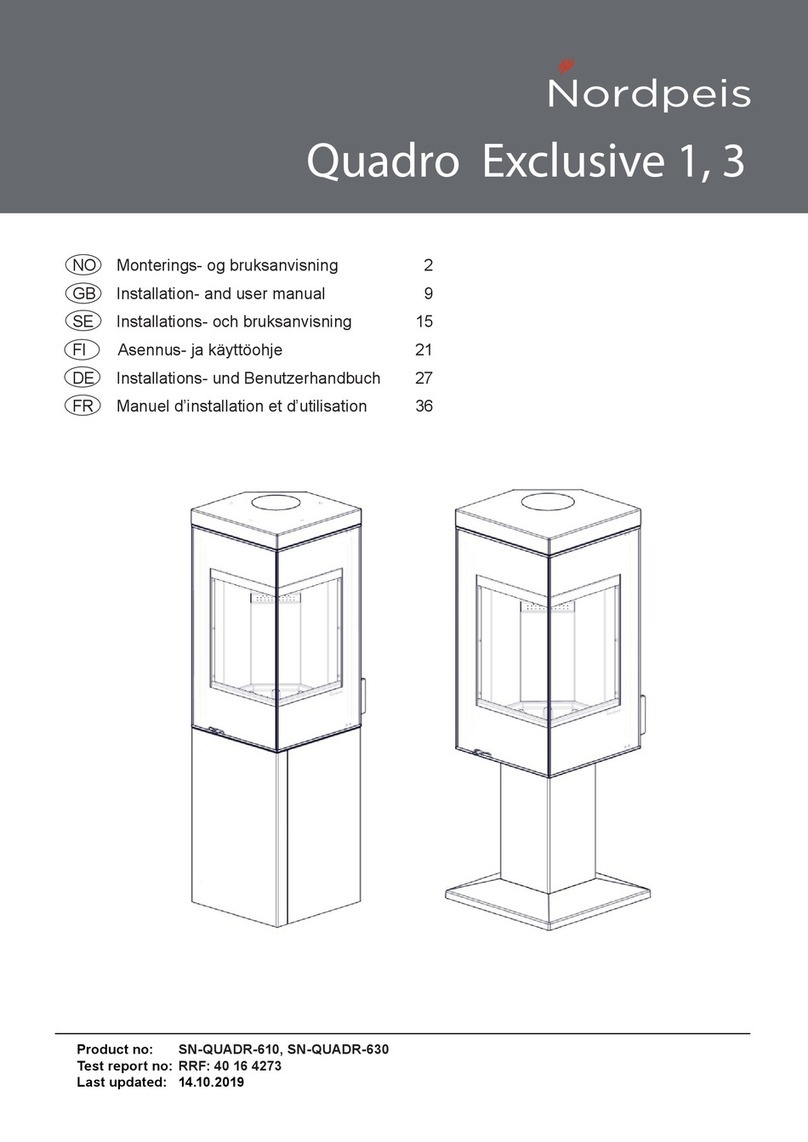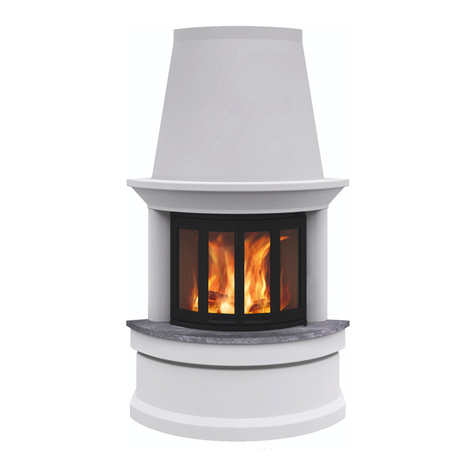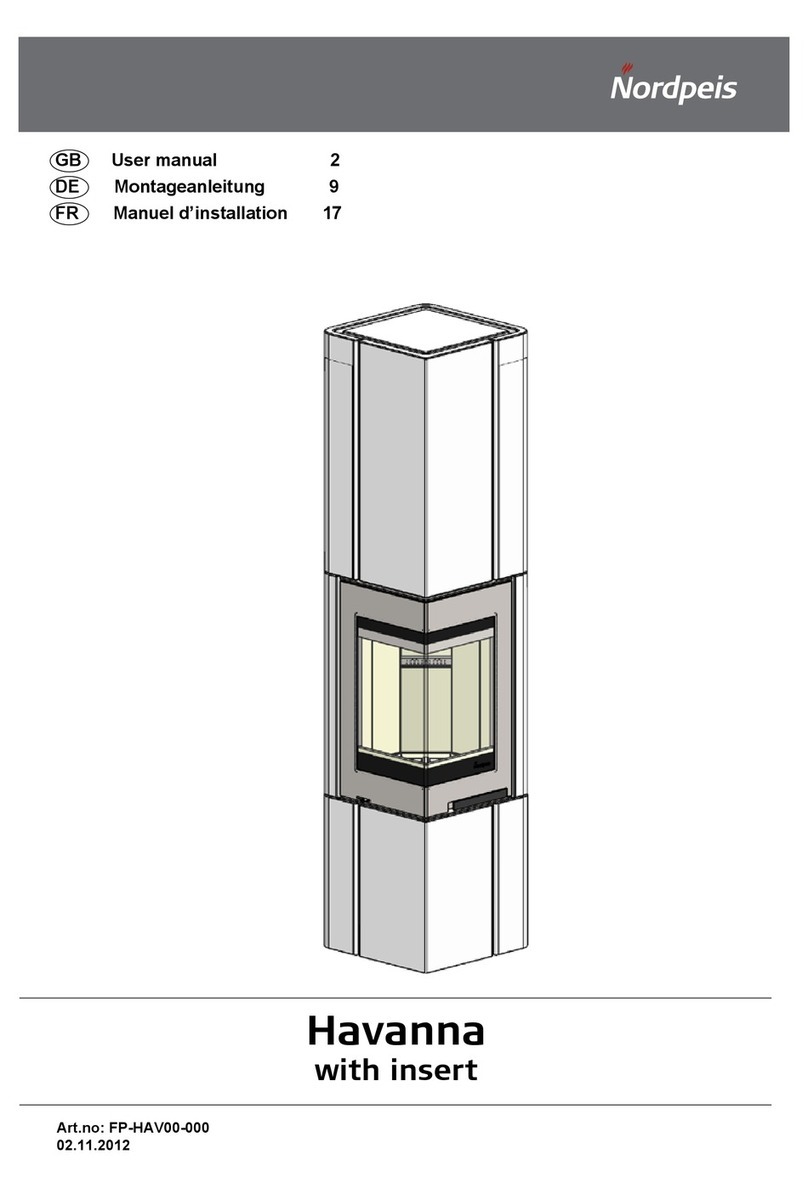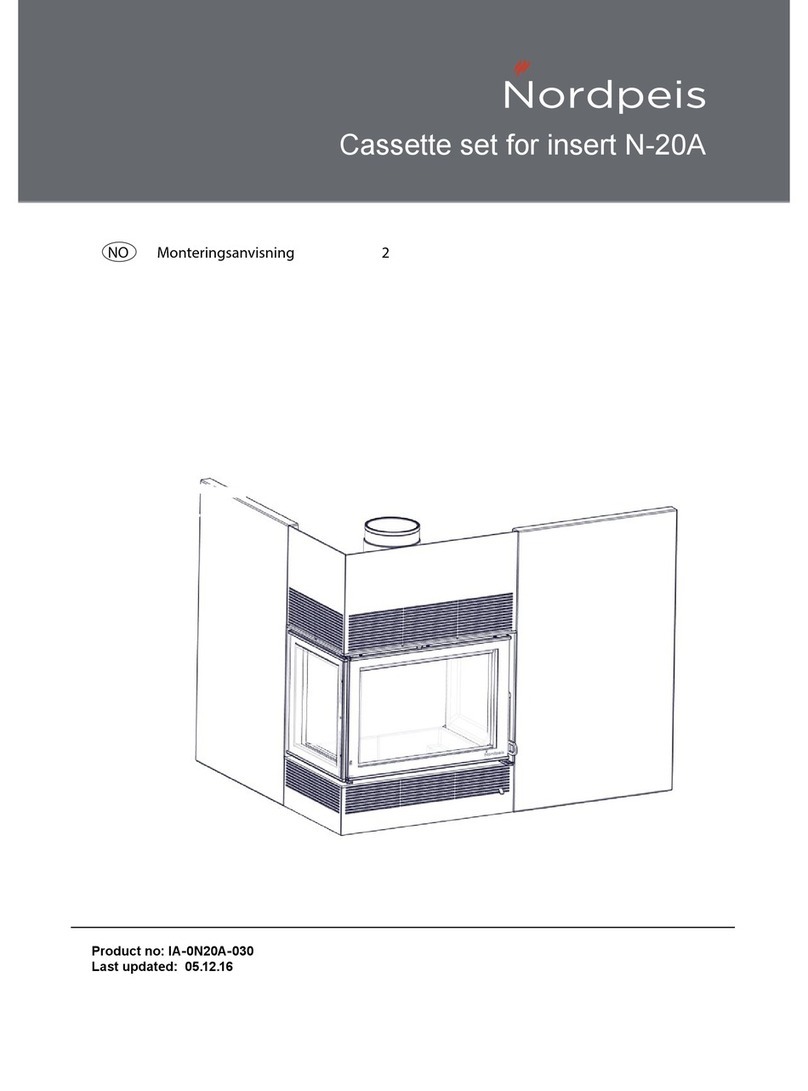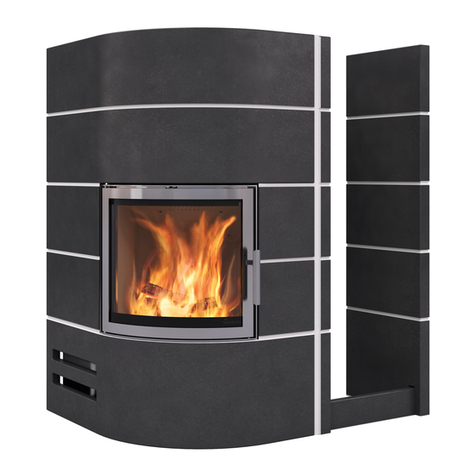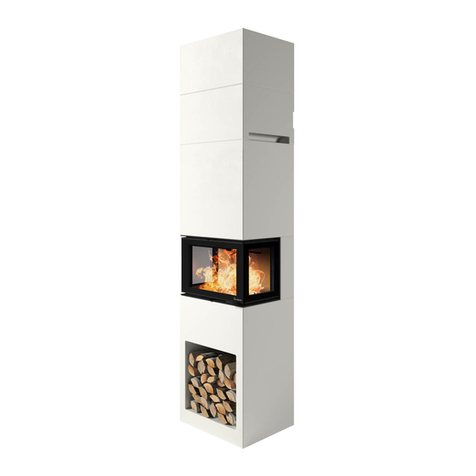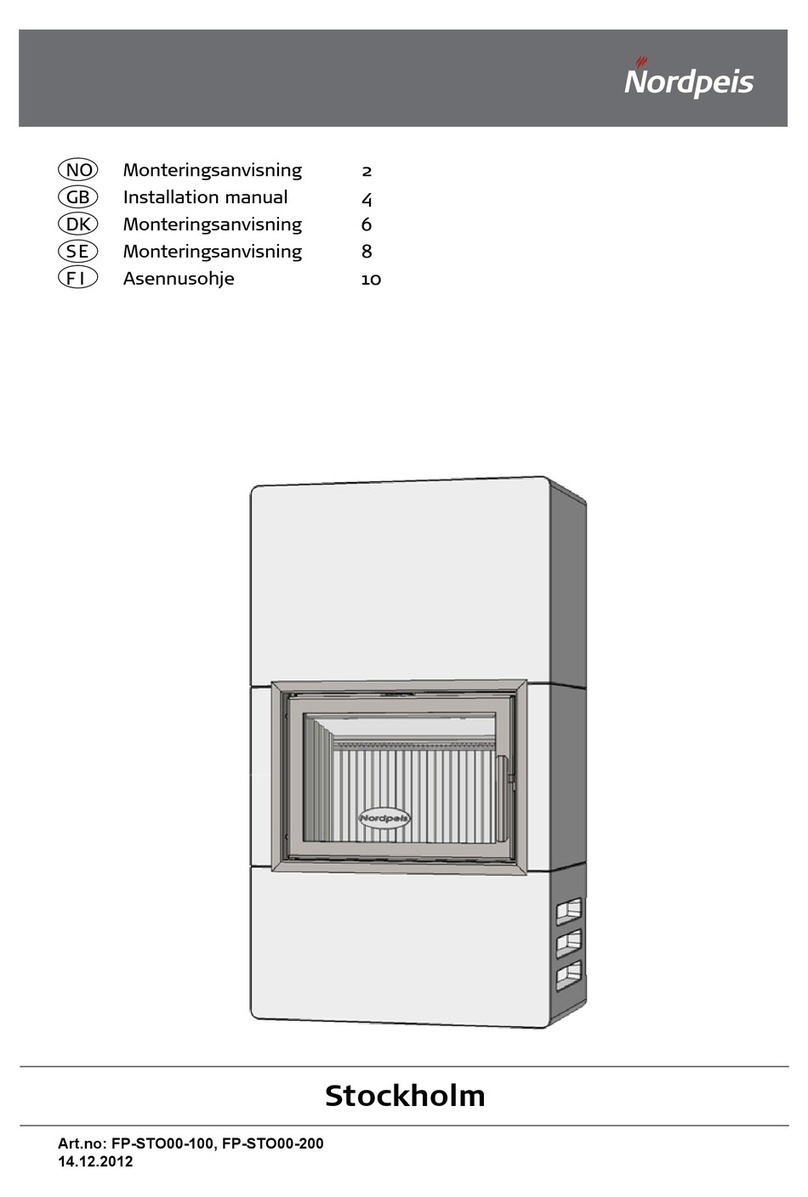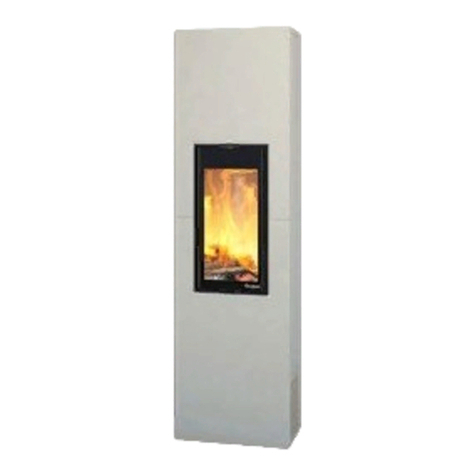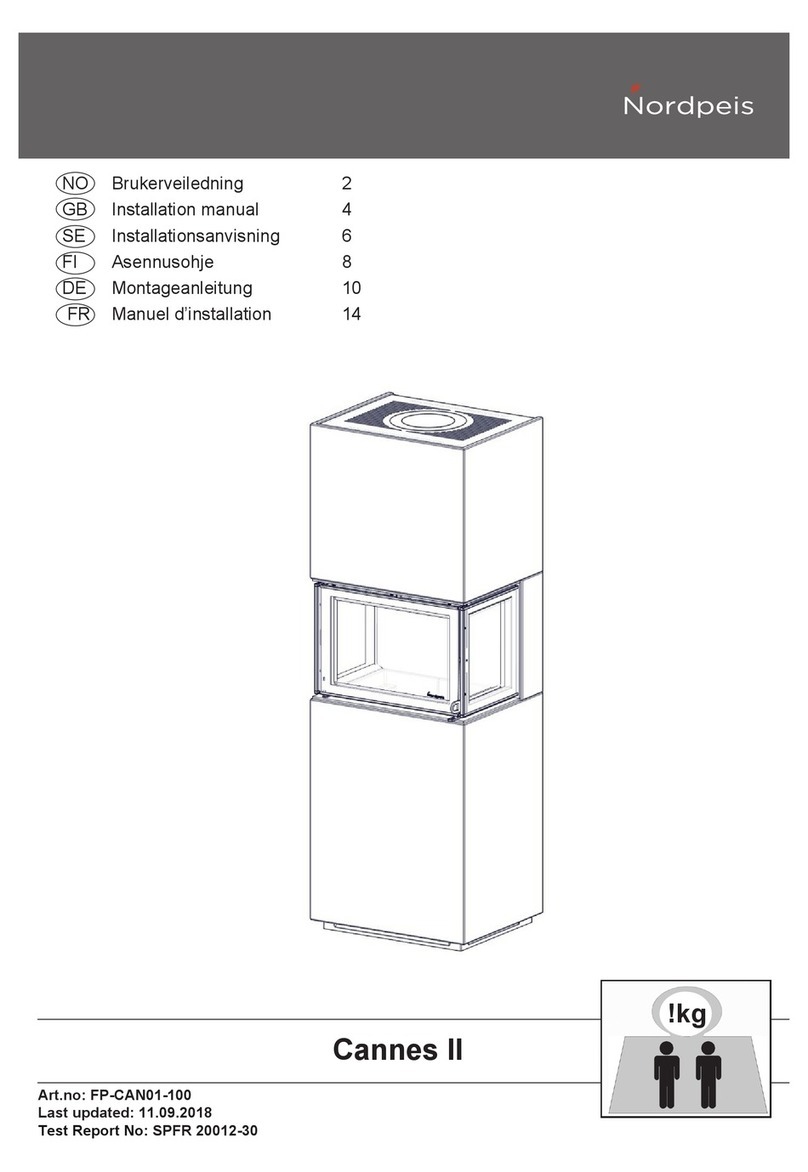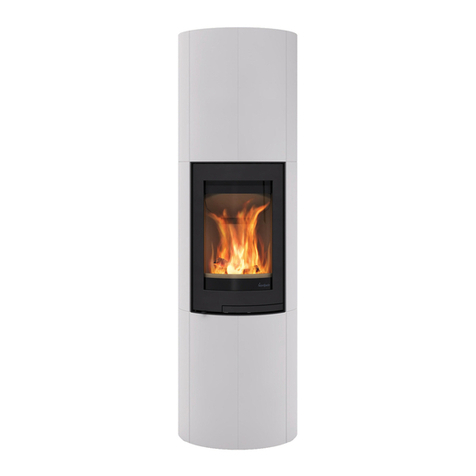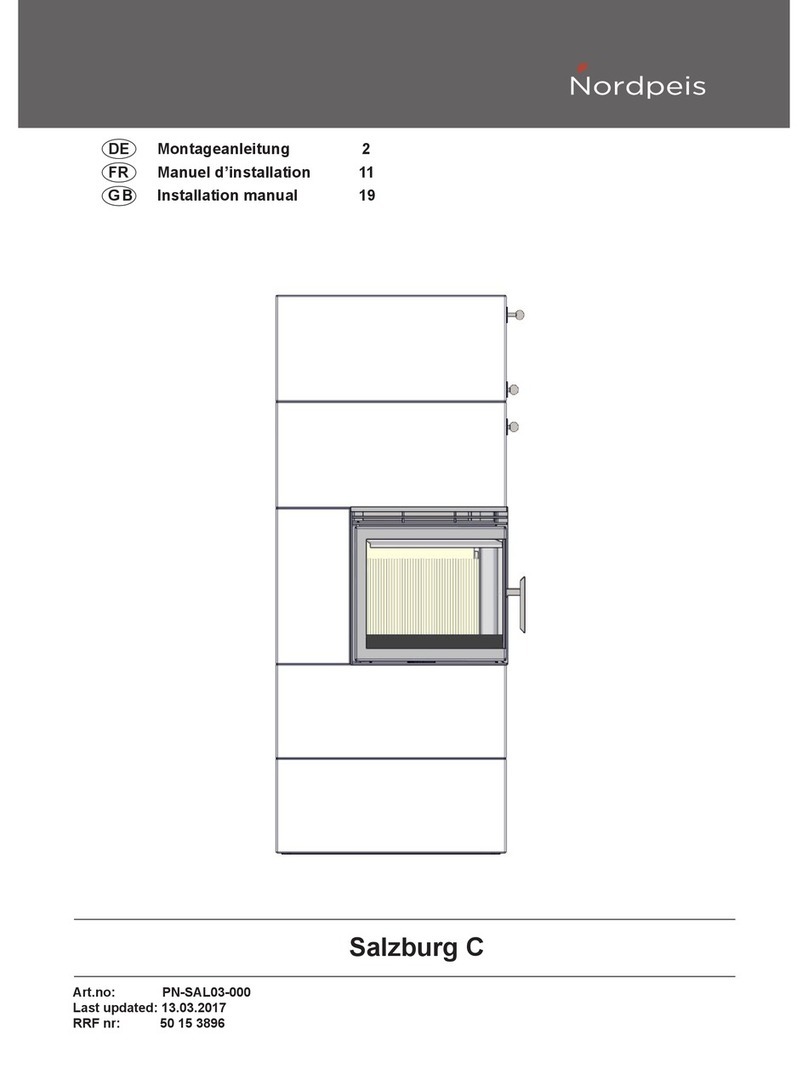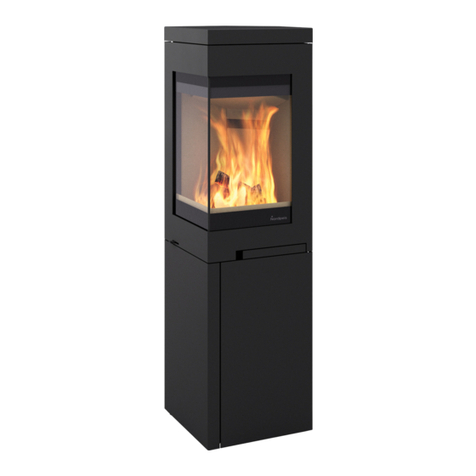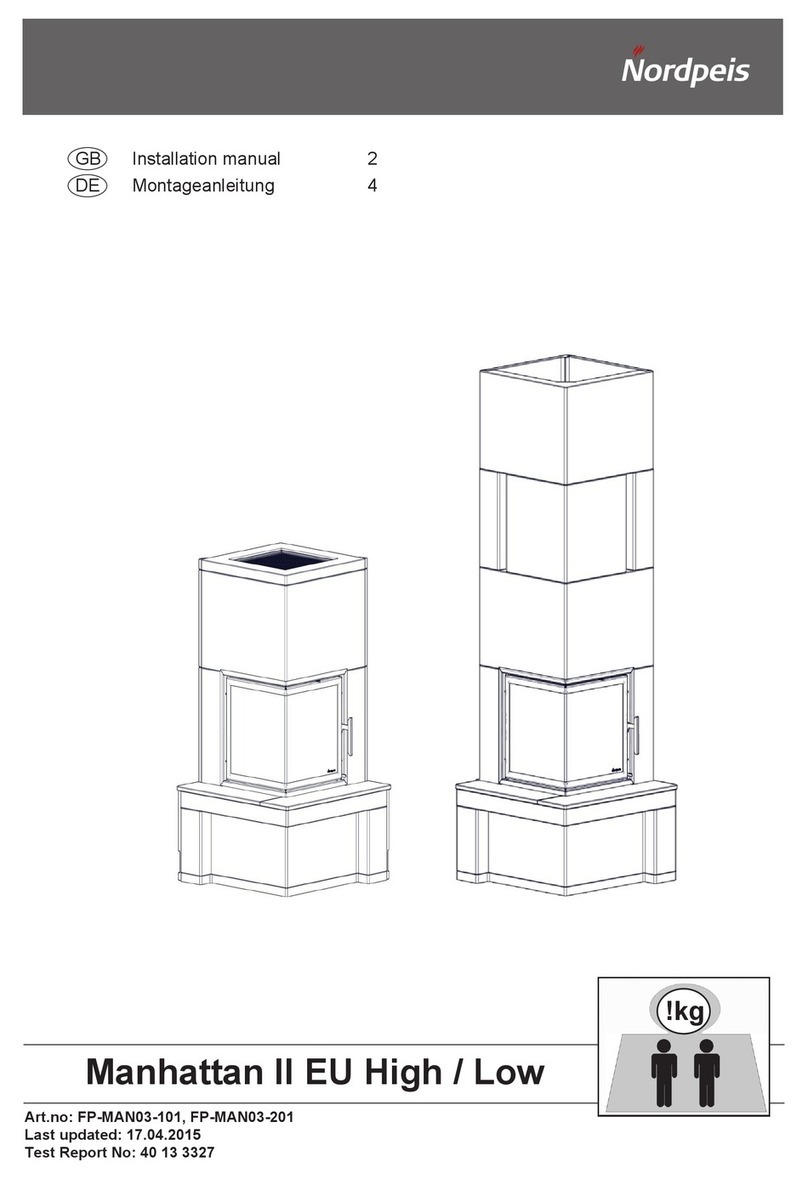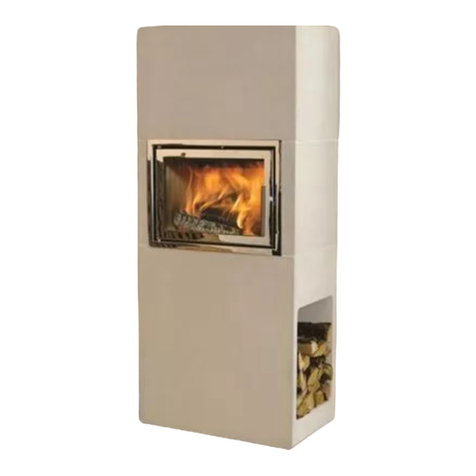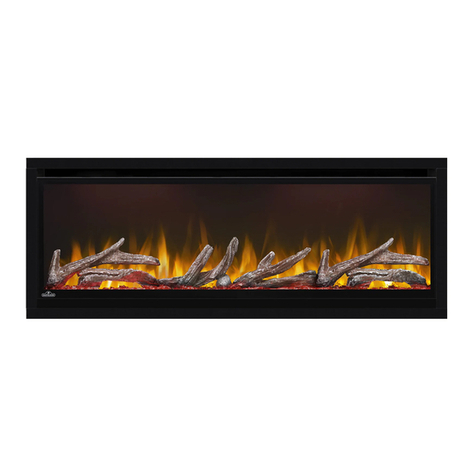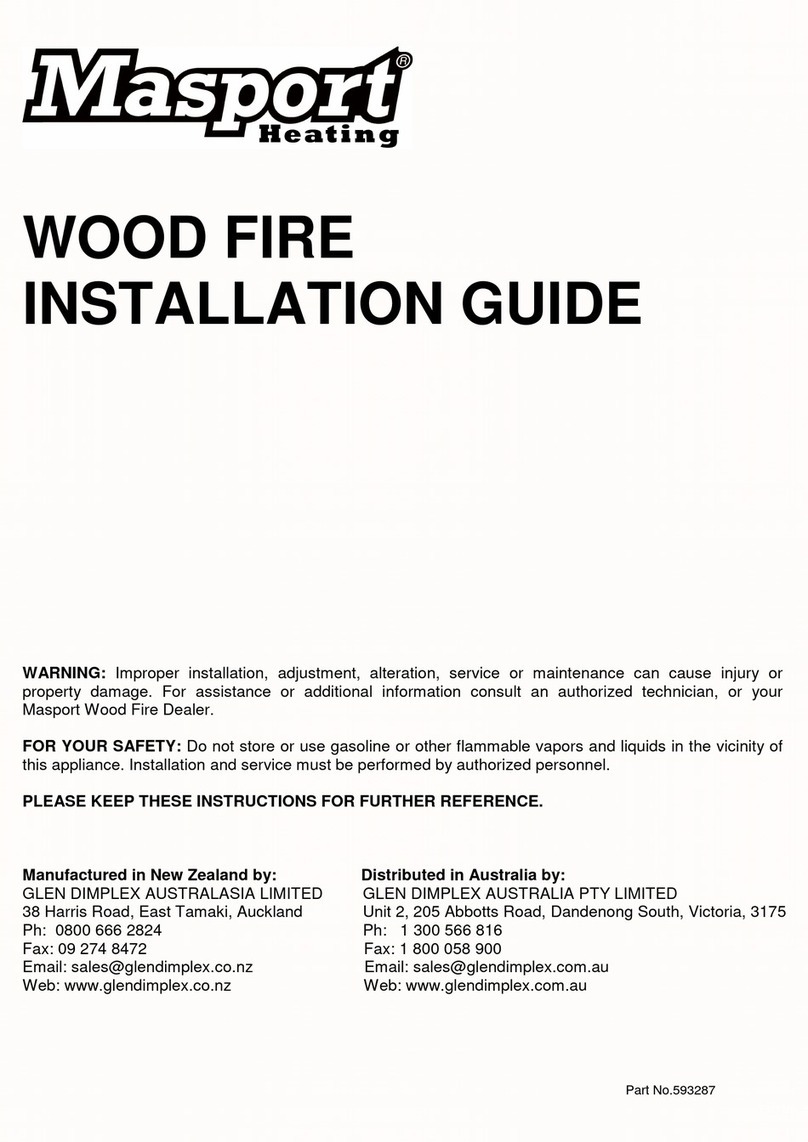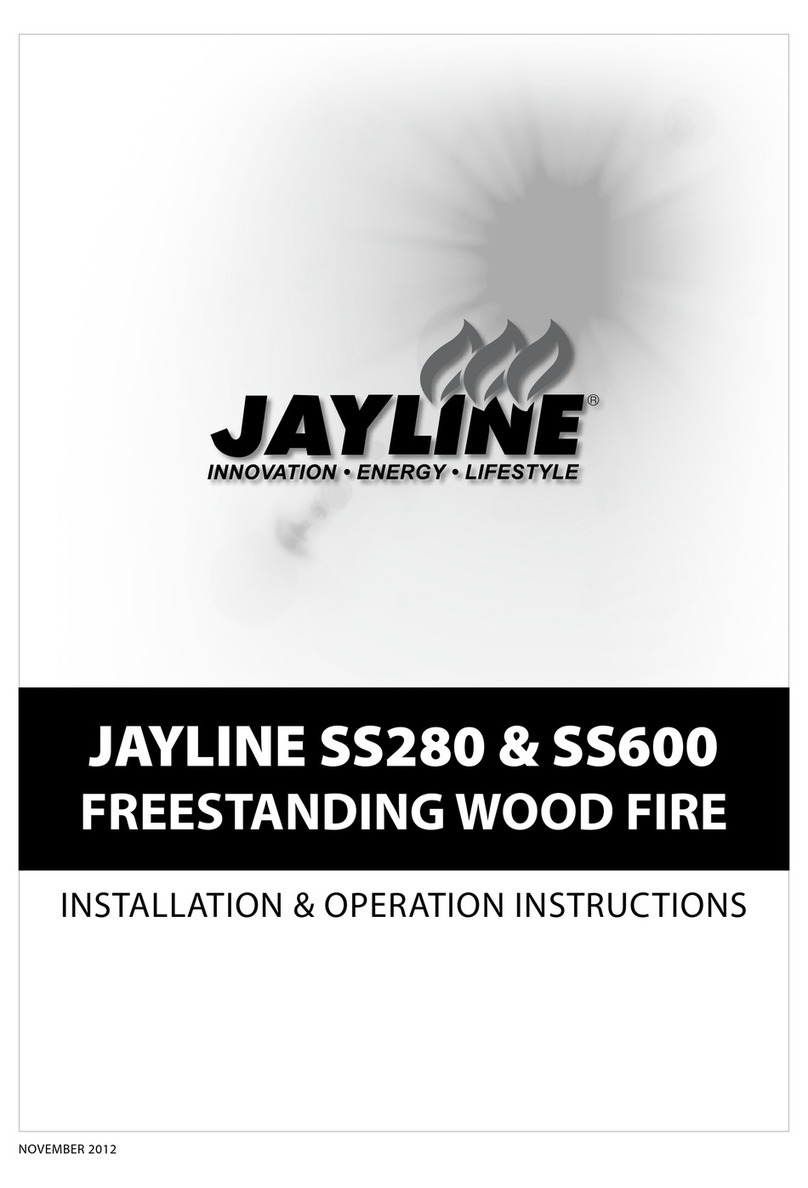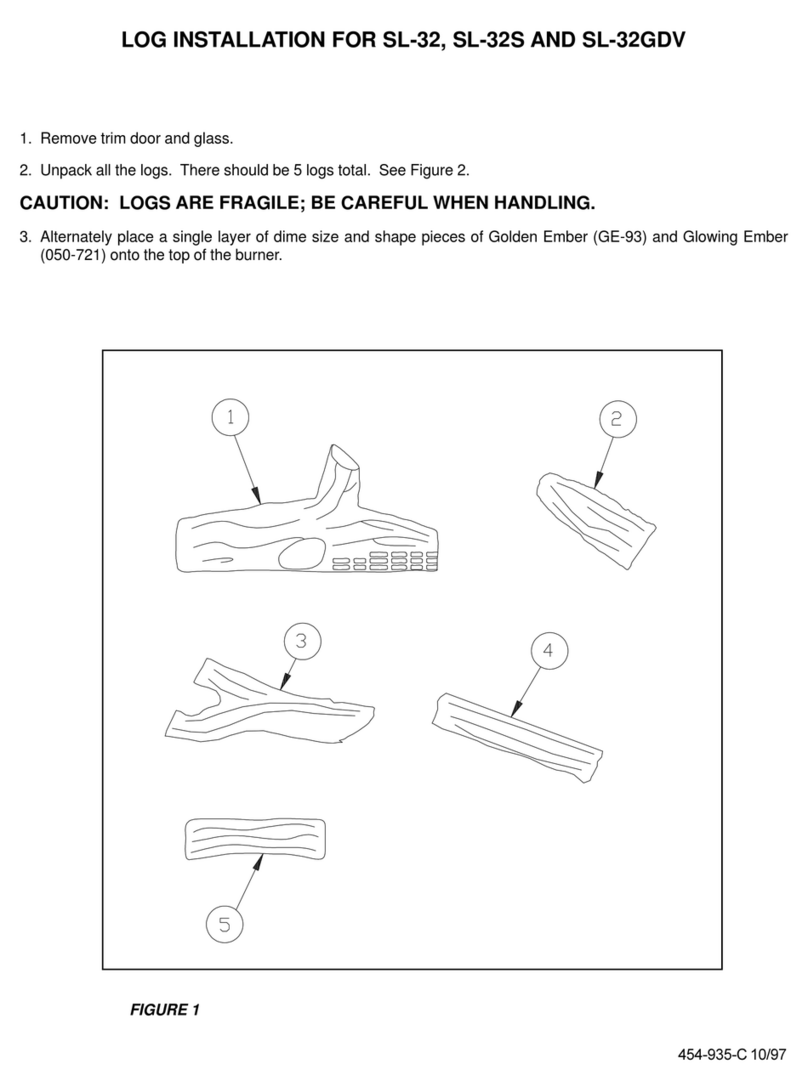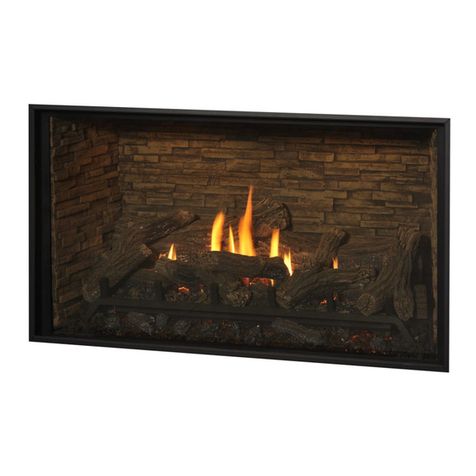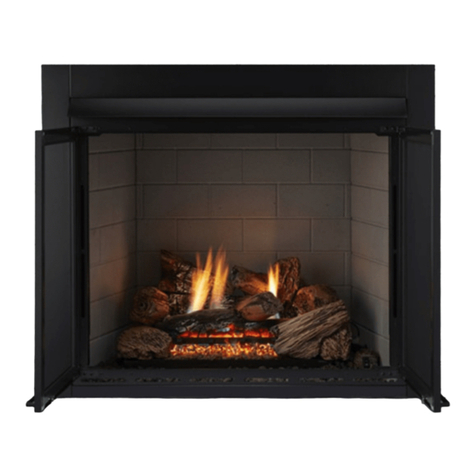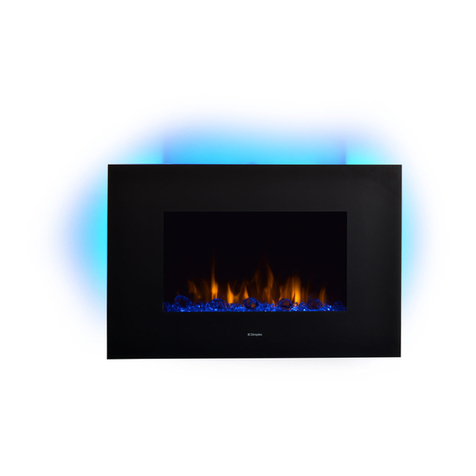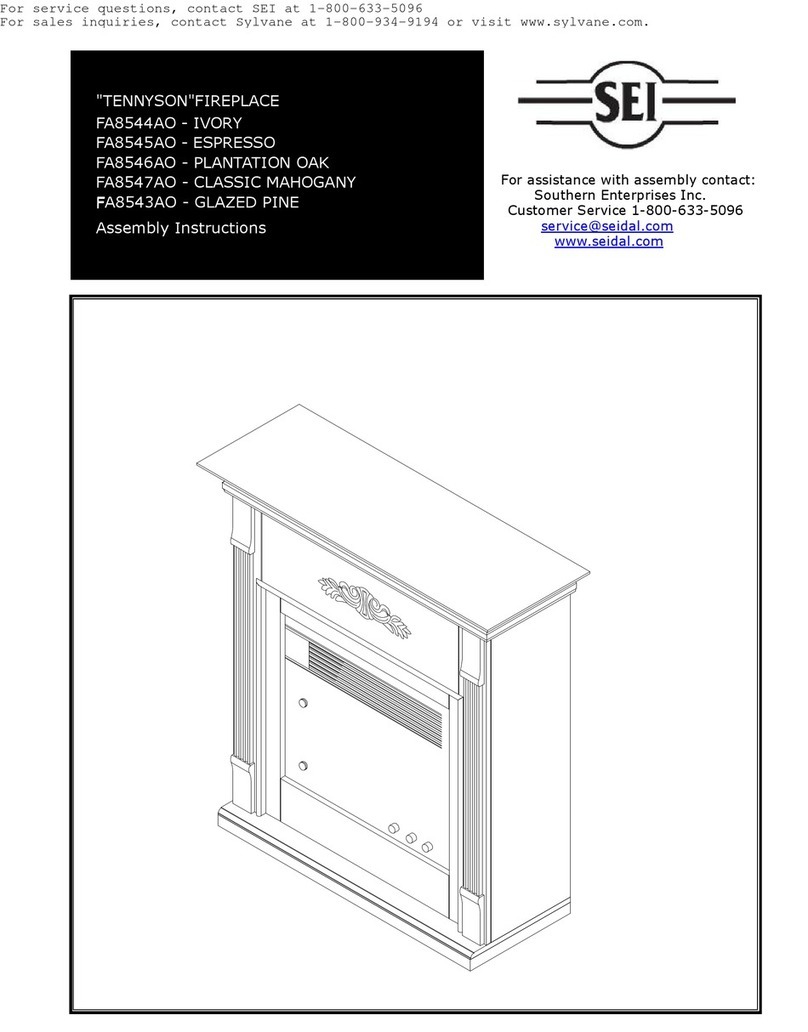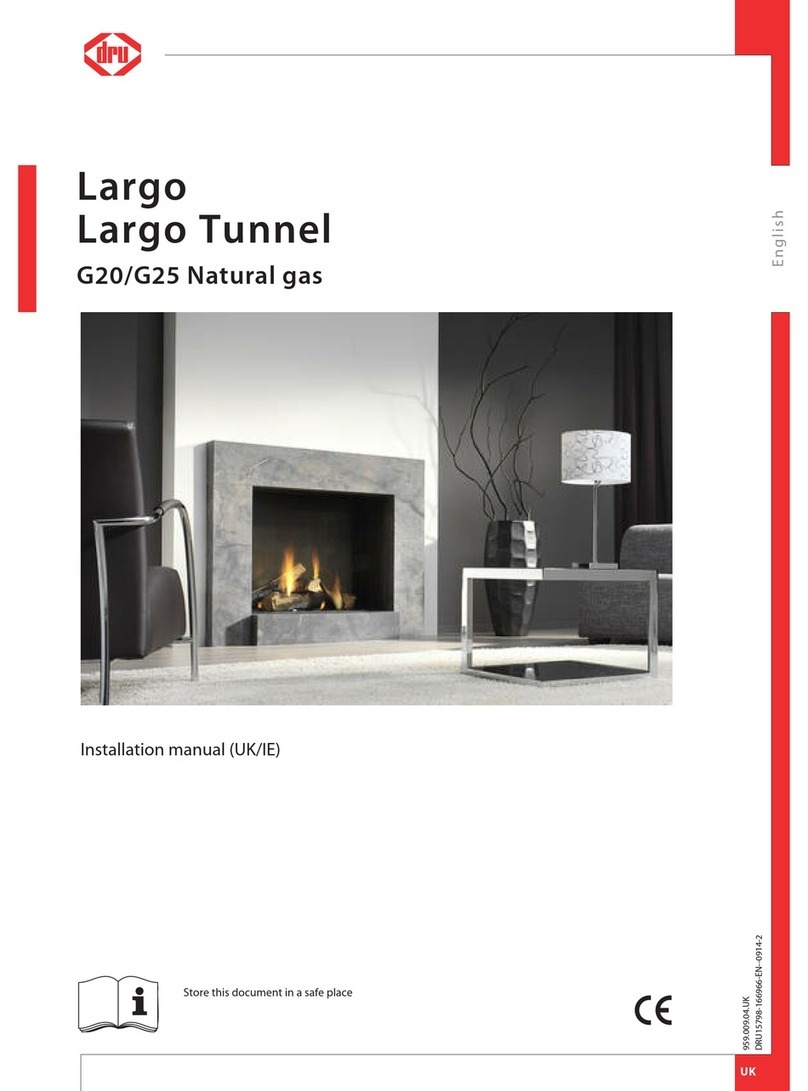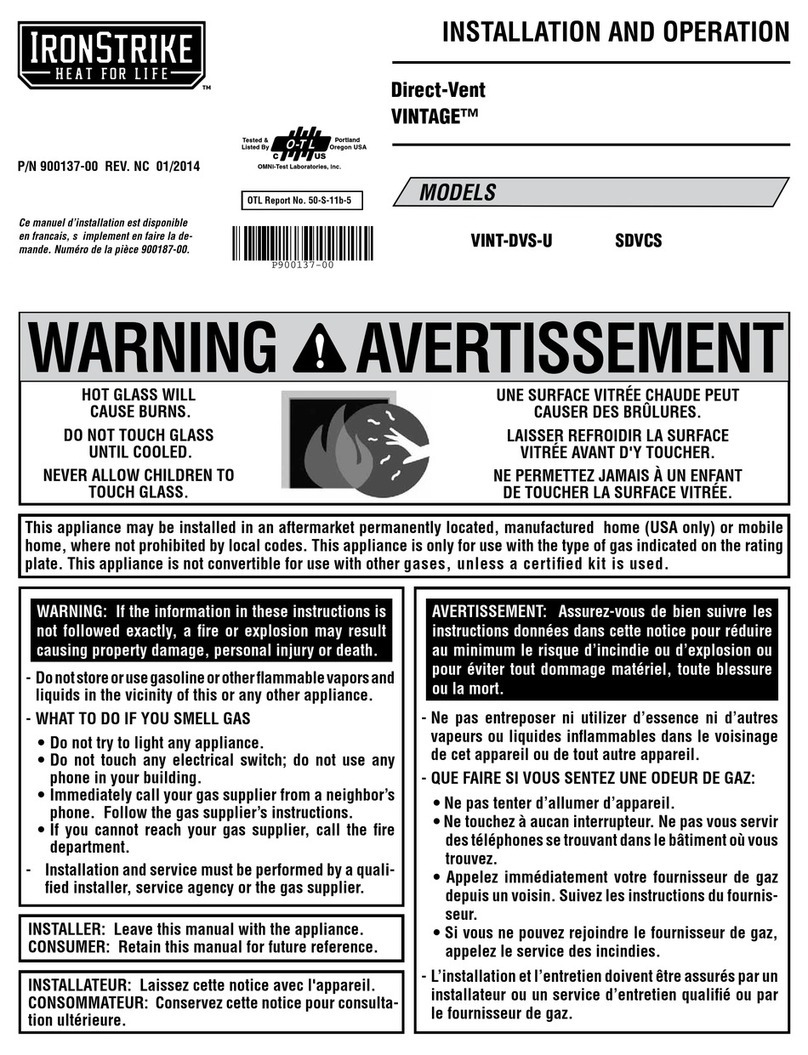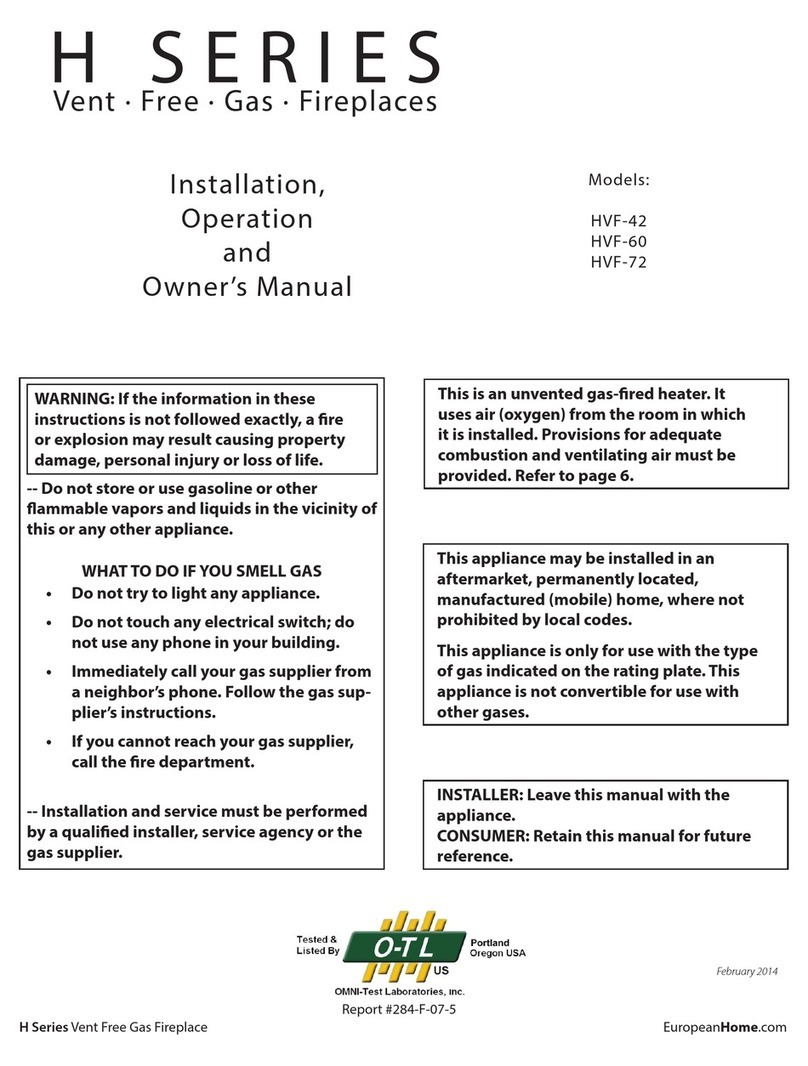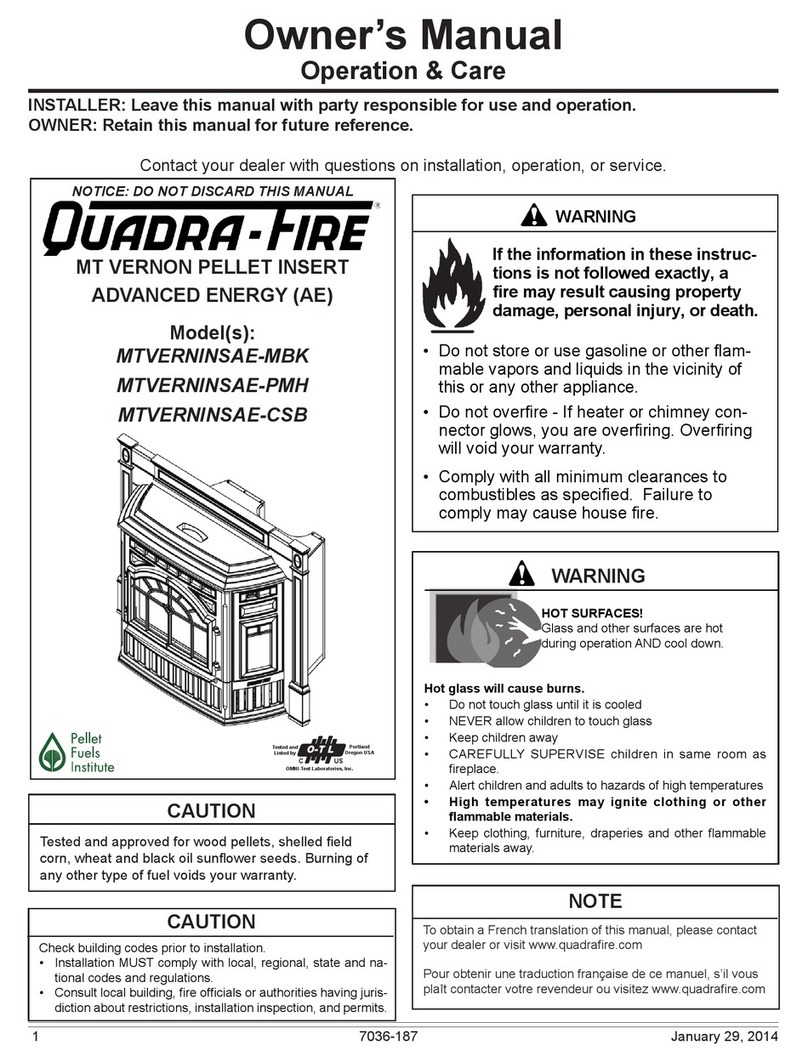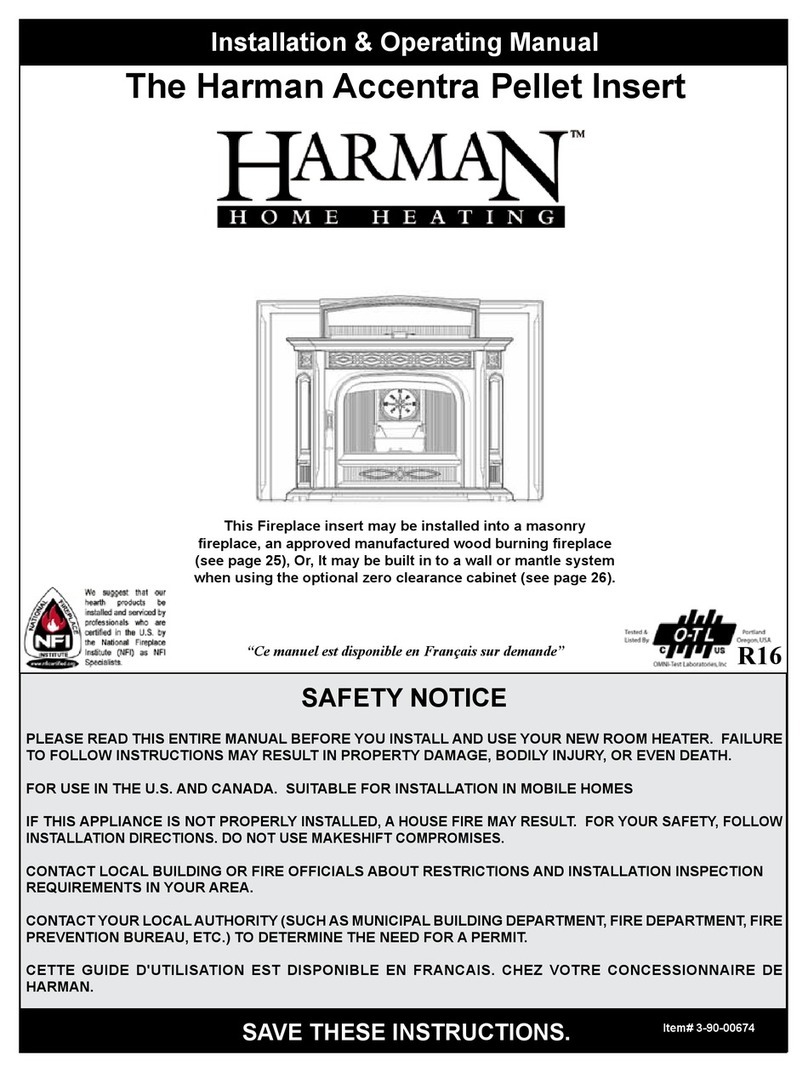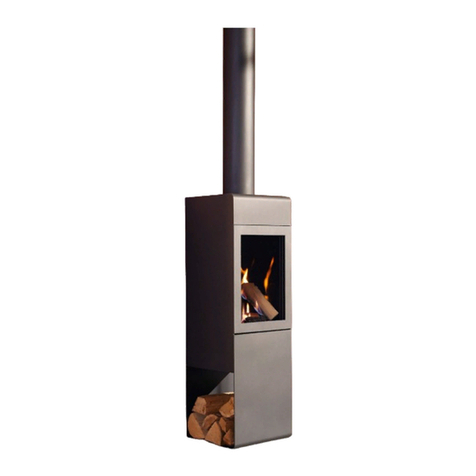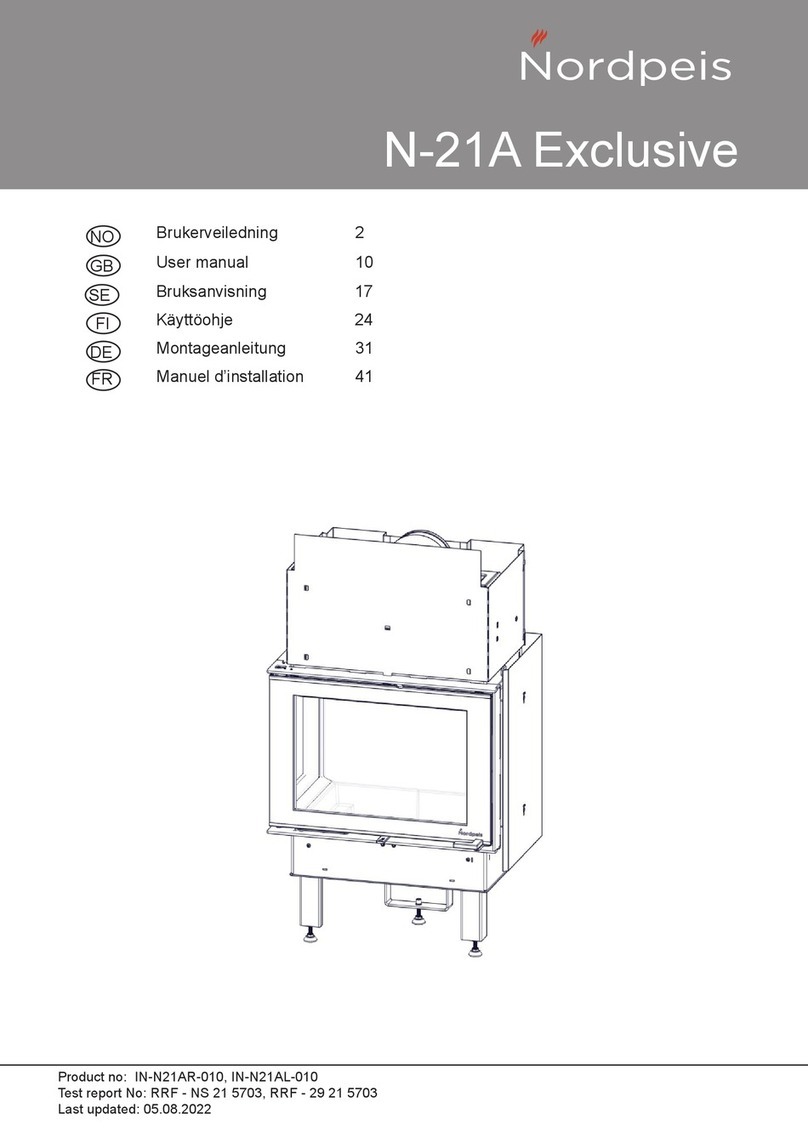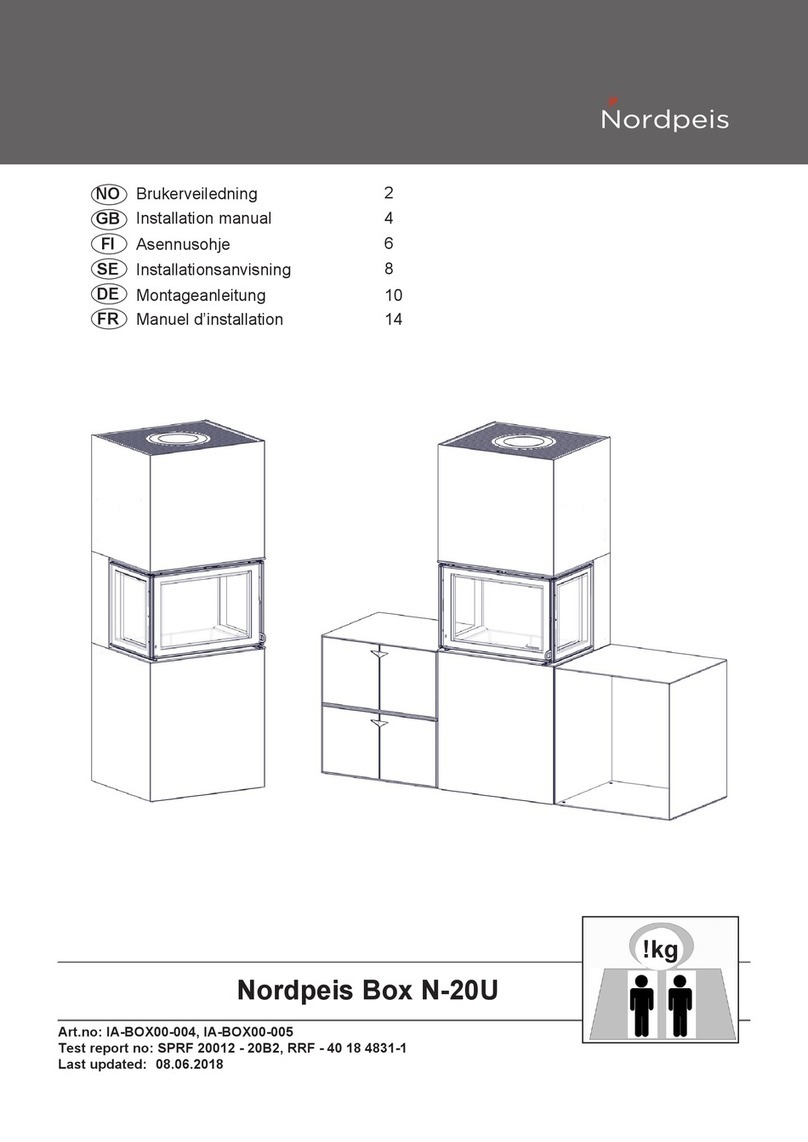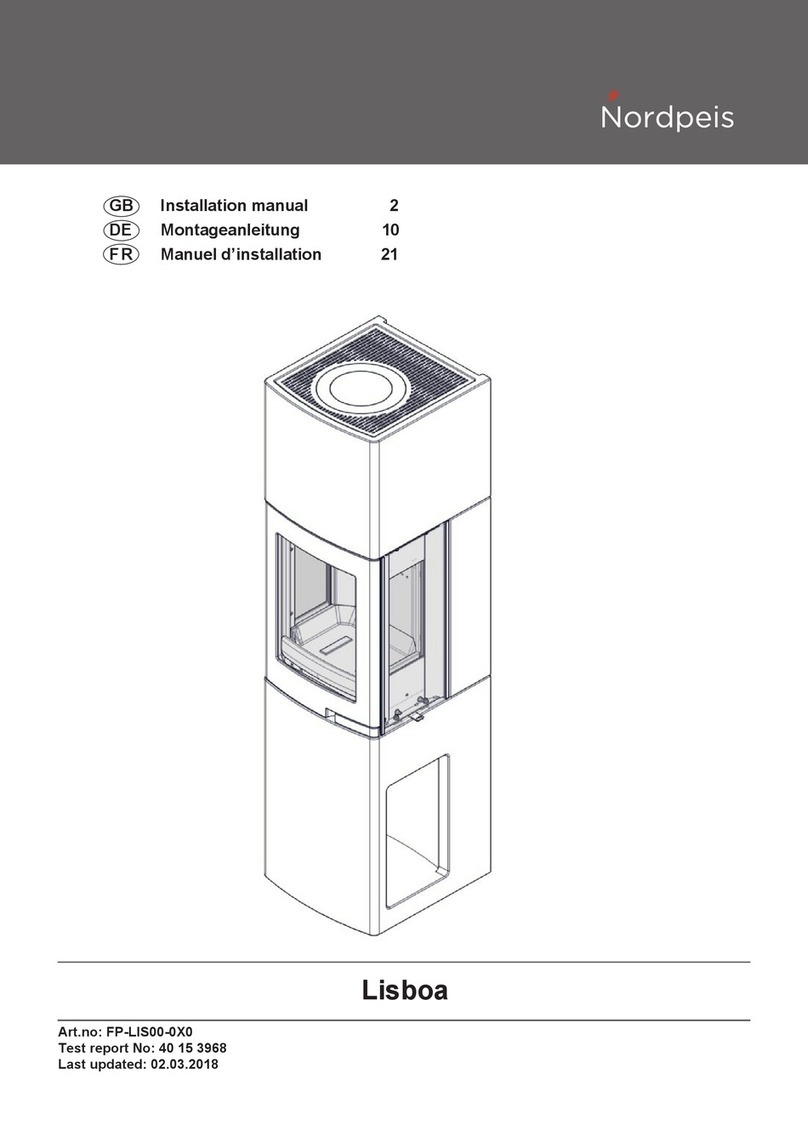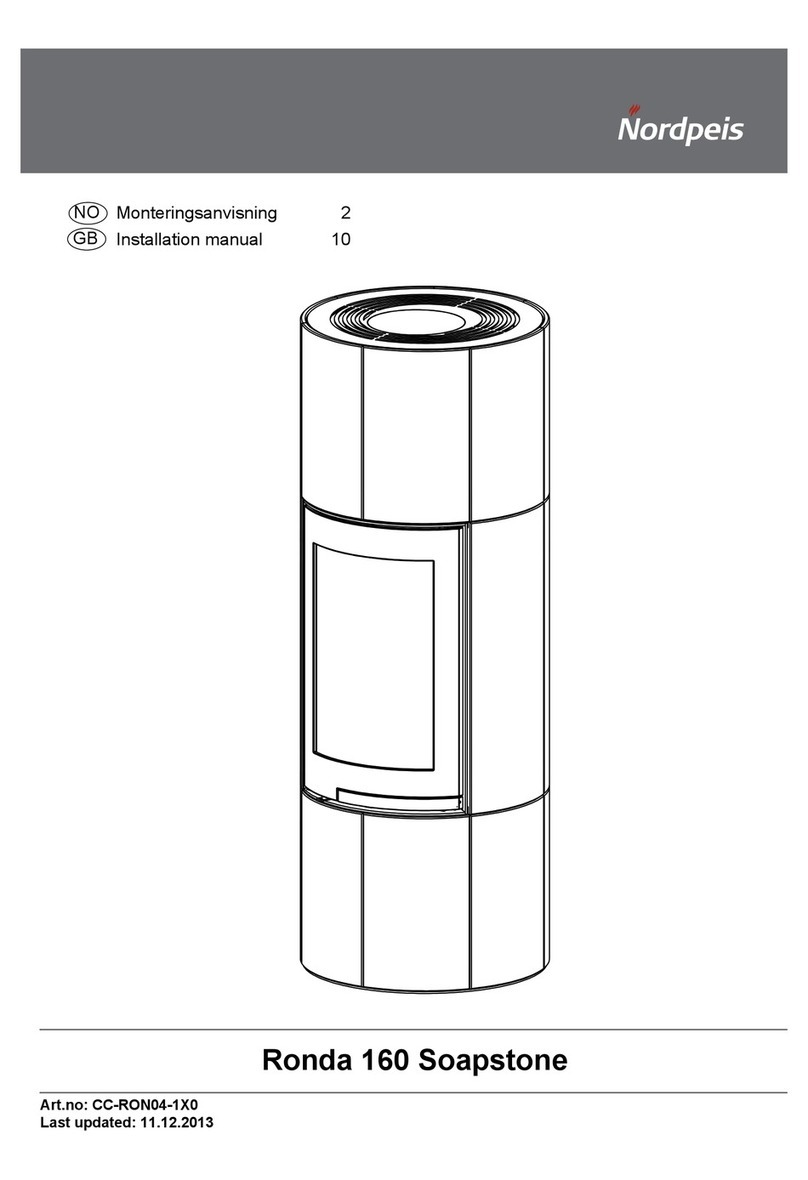røykvenderplater, glass og pakninger. Dersom det
ovennevnte går i stykker eller må skiftes ut på grunn
av slitasje, kan nye deler bestilles hos din forhandler.
Garantien omfatter ikke skader som er oppstått
på grunn av feil betjening eller bruk: eksempelvis
overoppheting av ovnen med bakgrunn i feil
luftregulering eller bruk av feil brensel.
Ved garantireparasjon omfatter garantien kun
produktet. Det gis ikke støtte til demontering, transport
og oppmontering av peisovn. Det gis ingen erstatning
for følgeskader og skader på ande gjenstander
som skyldes bruken av ovnen. I forbindelse med
garantireparasjoner må det forevises datert faktura.
Ovnen er utstyrt med Sintef nr: 110-0251. Fullstendig
produktdokumentasjon kan lastes ned på
www.nbl.sintef.no. CE merkingen er plassert til
venstre innenfor bunnluken.
9. Fyringstips
Advarsel: Bruk ALDRI opptenningsvæske
som bensin, paran, rødsprit eller lignende
til opptenning. Du kan skade både deg selv
og produktet.
Den beste måten å tenne opp et ildsted er ved
bruk av opptenningsbriketter. Aviser gir mye aske
og trykksverten er ikke bra for miljøet. Reklamer,
magasiner og melkekartonger mm er ikke egnet for
opptenning i ildsteder.
Advarsel: Bruk ALDRI impregnert tre, malt tre,
plastlaminat, kryssner, sponplater, avfall,
melkekartonger, trykksaker eller lignende.
Ved bruk av disse materialene bortfaller
garantien, da de kan inneholde giftige,
etsende og farlige damper når de forbrennes.
Videre kan de utvikle den giftige gassen dioksin,
som kan skade ovnen og miljøet.
Det er svært viktig av man alltid bruker ren og tørr
ved. Fuktig ved krever mye luft til forbrenningen, siden
det må brukes ekstra energi/varme til å tørke ut det
fuktige treet. Varmeavgivelsen er derfor minimal.
Samtidig fører det til sotdannelse i pipen med fare for
beksot og pipebrann.
Feil fyring
For stor lufttilførsel til forbrenningen gir en
ukontrollerbar amme, som svært raskt vil varme opp
hele peisinnsatsen til en ekstremt høy temperatur
(gjelder ved fyring med lukket, eller nesten lukket dør).
Fyll aldri opp peisovnen helt opp med ved. Levetiden
på thermotteplatene reduseres vesentlig ved et
overfylt brennkammer, da det lettere oppstår sprekker.
Litt teknisk om fyring
For å oppnå en optimal forbrenning, må temperaturen
opp til 600-800°C. Det er best å fyre jevnlig med
en liten mengde ved. Hvis det legges for mange
vedkubber på et glødelag, vil den tilførte luften
ikke være tilstrekkelig til å oppnå den nødvendige
temperaturen, og gassene vil forsvinne uforbrent ut
gjennom pipen. Derfor er det viktig å tilføre luft til bålet
like etter at brenselet er lagt på, slik at det er ammer i
brennkammeret og gassene dermed forbrennes.
Bruk kløyvet ved fremfor rund stor ved. Dette gir bedre
varmeavgivelse og renere forbrenning. Peisovner fra
Nordpeis er konstruert og godkjent kun for fyring med
ved.
Pipetrekk
Pipa er en viktig faktor for å få full utnytelse av
ildstedet. Selv den beste ovnen vil fungere dårlig
hvis pipa ikke er riktig dimensjonert og i god stand.
Anbefalt trekk er fra 14–25 Pascal.
Advarsel: Pass på at produktet ikke
blir overopphetet, det kan føre til
uopprettelig skade på ovnen.
Slike skader omfattes ikke av garantien.
Trekkforhold
Oppdriften styres hovedsaklig av røykgasstemperatur,
utetemperatur, lufttilførsel og pipehøyde.
Trekken øker når:
skorsteinen blir varmere enn utelufta•
den aktive lengden på skorsteinen øker (over •
ildstedet)
god lufttilførsel til forbrenningen•
Er pipe overdimensjonert i forhold til ildstedet, kan
det bli vanskelig å oppnå god trekk, fordi pipa ikke blir
godt nok oppvarmet. Dersom det er mulig, bør det
settes inn et mindre piperør. For kraftig trekk kan også
avhjelpes med en trekkbegrenser.
Varmedanning og – fordeling
Vi skiller mellom strålevarme og konveksjonsvarme.
I dobbeltveggede ovner, skapes en sirkulasjon av
varmluft. Luftrommet mellom ildstedets ytre og indre
vegg varmes opp. Denne oppvarmede luften stiger
opp og ut gjennom ventiler plassert høyt på ildstedet.
Samtidig suges kald gulvluft inn i luftrommet gjennom
spalter/ventiler plassert lavt på ildstedet.
Strålevarme er en direkte stråling fra en enkeltvegget
ovn, samt varmestrålingen gjennom glasset på alle
ovner og peiser. Denne varmen er intens og mer
stillestående enn konveksjonsvarmen. Produktets
overatetemperatur blir høy, og avstandskravet til
brennbar vegg øker betraktelig.
